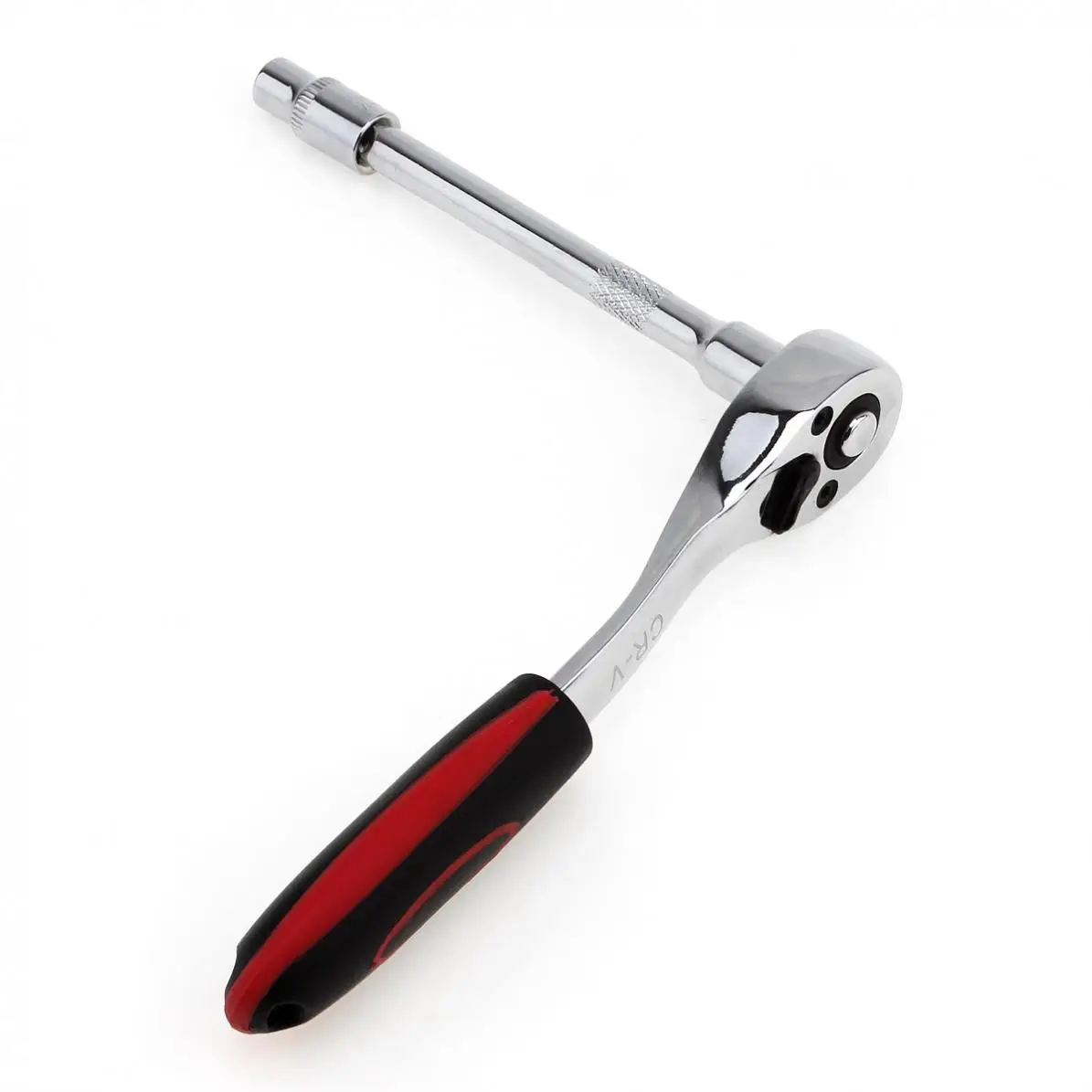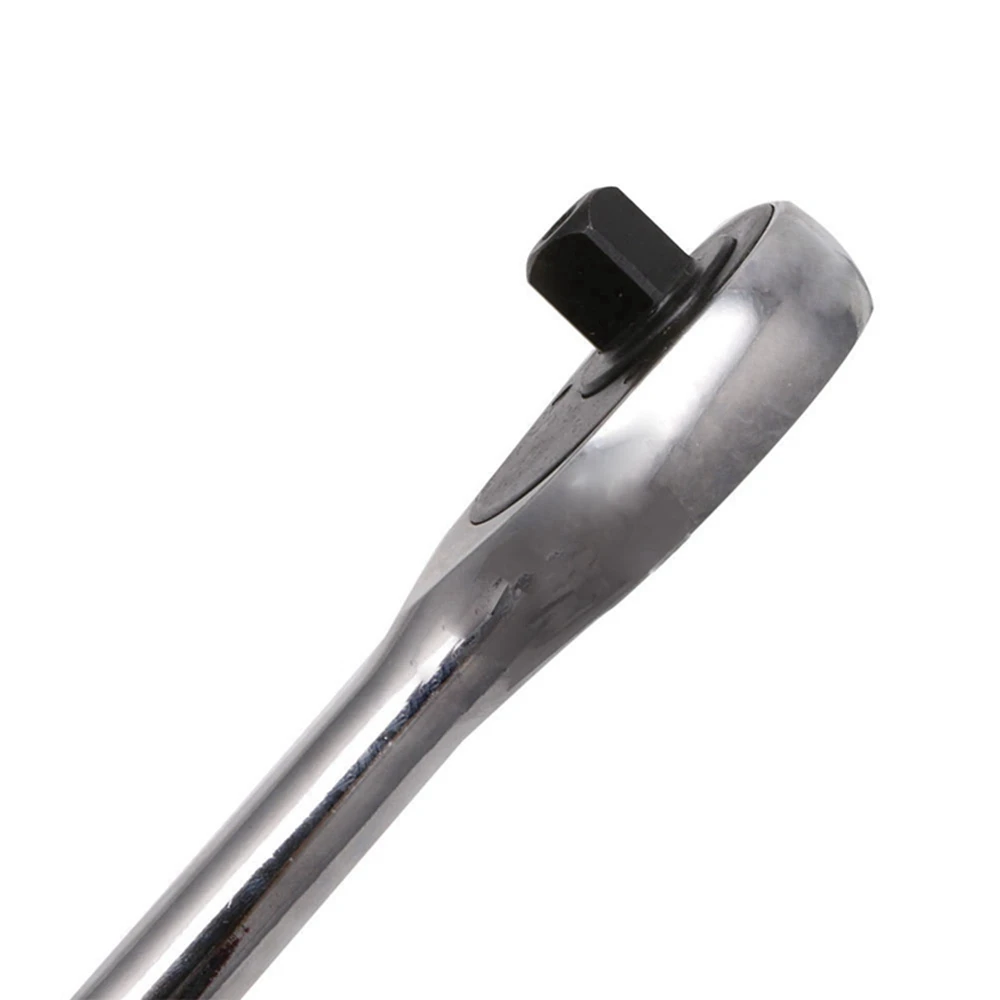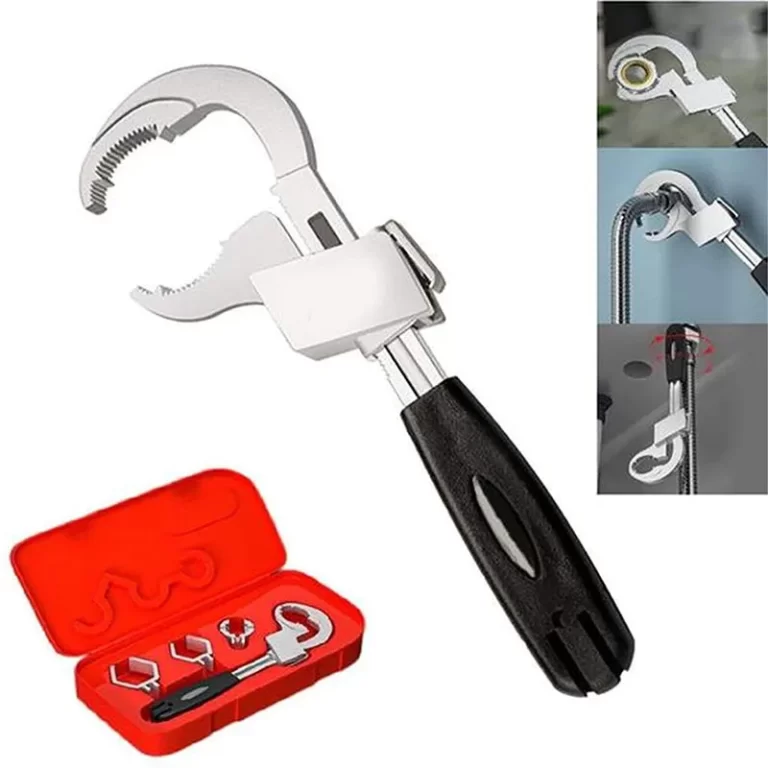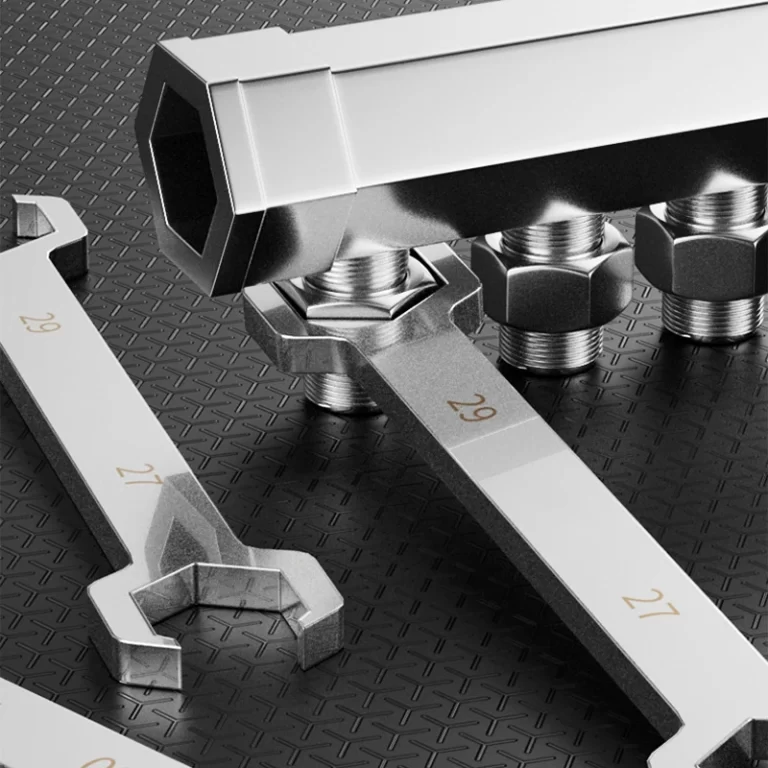
How to Use a Socket Wrench – A Simple Step-by-Step Guide
Learning how to use a socket wrench is essential for anyone tackling mechanical or home repair tasks. This versatile tool makes it easy to tighten or loosen nuts and bolts quickly and efficiently. Whether you’re changing a tire, assembling furniture, or working on an engine, a socket wrench saves time and effort.
Unlike standard wrenches, a socket wrench uses interchangeable heads called sockets. These fit over fasteners of different sizes. The ratcheting mechanism allows continuous motion without removing the tool. This means faster work and less strain on your hands.
There are several types of socket wrenches. The most common is the ratchet wrench. Others include breaker bars, torque wrenches, and speed handles. Each serves a unique purpose.
Sockets come in sets with varying drive sizes. Common ones are 1/4-inch, 3/8-inch, and 1/2-inch drives. You must match the socket to the wrench’s square drive.
Safety matters too. Always wear gloves and eye protection. Make sure the socket fits snugly to avoid slipping.
As we go deeper, you’ll learn step-by-step methods, maintenance tips, and common mistakes to avoid when learning how to use a socket wrench.
 What is a Socket Wrench?
What is a Socket Wrench?
Socket wrenches are versatile tools found in most toolkits. They make tasks easier and quicker. Let’s explore their definition, purpose, and common applications.
Definition and Purpose of Socket Wrenches
A socket wrench is a tool used for tightening or loosening bolts and nuts. It features a handle and interchangeable sockets that fit various fastener sizes. This design allows for more flexibility compared to regular wrenches.
Socket wrenches are designed to provide greater torque with less effort. They are commonly used in tasks requiring high precision and efficiency. These tools save time and reduce hand strain, making them great for repetitive tasks.
Common Applications in Everyday Projects
Socket wrenches are essential for many projects:
- Automotive repairs: They help fasten and remove car parts like wheels and engine components.
- Furniture assembly: Use them to secure bolts during the assembly of chairs, tables, and beds.
- Plumbing: They assist in tightening pipe connections and fixtures securely.
- Household maintenance tasks: Use them for fixing appliances, adjusting equipment, and installing items.
- Construction work: They are handy for building structures and installing machinery.
Socket wrenches speed up work and provide reliable results in these projects. Their adaptability makes them a favorite tool for both professionals and DIY enthusiasts.
Types of Socket Wrenches
Choosing the right socket wrench depends on the task and the materials involved. Here are the common types of socket wrenches you should know about:
Standard Socket Wrench
A standard socket wrench, often known as a hand wrench, is simple yet effective. It consists of a handle and interchangeable sockets. These are ideal for basic tasks like loosening or tightening bolts and nuts. They come in different sizes for handling diverse fasteners.
Ratcheting Socket Wrench
Ratcheting socket wrenches feature a ratcheting mechanism for quick, repetitive tasks. They allow you to turn fasteners without removing the wrench. This saves time and makes work efficient. They are perfect for cramped spaces where full rotation isn’t possible.
Impact Socket Wrench
Impact socket wrenches are heavy-duty tools designed for high-torque applications. They are often paired with power tools like impact drivers. These wrenches are ideal for machinery repairs, automotive work, and construction. Their durable build can withstand intense pressure without breaking.
Torque Wrench and Its Uses
A torque wrench offers precise control for tightening bolts to specific force levels. These are essential for tasks where over-tightening can cause damage, such as automotive engine assembly. They ensure safety and maintain structural integrity across a wide range of industrial and household tasks.
Understanding these types helps you pick the right socket wrench for any project. Knowing what each type can do maximizes efficiency and avoids mistakes in your work.
 Components of a Socket Wrench
Components of a Socket Wrench
Understanding the components of a socket wrench is essential for efficient use. Each part plays a unique role, enhancing ease and accuracy in various tasks.
Wrench Handle
The wrench handle is the primary part you hold to operate the tool. It provides leverage to turn fasteners with ease. Handles come in various sizes, offering different levels of grip and torque. Some handles also feature ergonomic designs to reduce hand fatigue during long use. A well-designed handle ensures a firm grip and precise movements.
Sockets: Sizes and Fittings
Sockets are interchangeable attachments that fit over the bolt or nut you are working on. They come in multiple sizes to accommodate different fasteners. Common sizes include metric and SAE (Standard American Equivalent) measurements. It’s crucial to choose the correct size to avoid damaging the fastener. Additionally, sockets have specific fittings, such as six-point or twelve-point designs, to match various bolt heads. Using the right socket ensures a secure fit and prevents slipping.
Extensions and Adapters
Extensions and adapters enhance the versatility of your socket wrench. They provide added length to the wrench, making tough spots accessible. Adapters, on the other hand, allow you to use sockets with different drive sizes. For example, they let you attach a 3/8-inch socket to a 1/2-inch wrench handle. These components expand the functionality of your socket wrench, making it suitable for diverse tasks.
Mastering these components ensures you get the most out of your socket wrench. Understanding their roles helps in selecting and using the tool effectively.
How to Use a Socket Wrench
How to use a socket wrench? Using a socket wrench correctly ensures efficiency and avoids damaging fasteners. Below are detailed instructions to help you master this tool.
Step-by-Step Guide to Using a Socket Wrench
- Select the Right Socket: Pick a socket matching the size of the bolt or nut.
- Attach the Socket to the Wrench: Secure the chosen socket to the wrench handle firmly.
- Position the Socket on the Fastener: Place the socket squarely over the bolt or nut.
- Apply Torque: Turn the wrench handle clockwise to tighten or counterclockwise to loosen.
- Use Extensions as Needed: If bolts are recessed, attach an extension for better reach.
- Check Tightness or Looseness: Make sure the fastener is properly adjusted before removing the wrench.
Following these steps ensures smooth and precise work.
Tips for Choosing the Right Socket Size
- Measure the Fastener: Use a measuring tool to determine the bolt or nut size.
- Match Socket Type to Bolt Head: Choose six-point sockets for durability or twelve-point sockets for more accessibility.
- Avoid Forcing: A wrong socket can damage the fastener or the tool itself.
- Check Markings: Refer to metric or SAE markings for accurate selection.
Choosing the correct socket prevents slippage and increases work speed.
Proper Techniques for Tightening and Loosening
- Maintain Firm Grip: Hold the wrench handle steadily for better control.
- Turn Slowly: Use gradual movements to avoid over-tightening or rounding off the fastener.
- Apply Even Pressure: Distribute force evenly to prevent mistakes.
- Use Torque Wrenches for Precision: For critical tasks, set torque levels to recommended specifications.
Mastering these techniques ensures tasks are completed safely and efficiently.
 Maintenance and Care for Socket Wrenches
Maintenance and Care for Socket Wrenches
Proper maintenance of socket wrenches ensures long-term efficiency and durability. Regular cleaning, careful storage, and addressing issues promptly will enhance their performance.
Cleaning and Storage Techniques
- Clean Wrenches After Use: Wipe wrenches with a clean cloth to remove dirt and grease.
- Use Mild Cleansers: Use mild soap and water for deeper cleaning without damaging the metal.
- Dry Thoroughly: Ensure the tools are completely dry to prevent rust.
- Lubricate Moving Parts: Apply lubricant to joints and ratchets for smooth functioning.
- Store in a Toolbox: Use a sturdy, dry toolbox to protect the wrenches from moisture and damage.
- Organize Sockets: Store sockets by size or type to avoid misplacement and save time during use.
Effective cleaning prevents wear, while organized storage simplifies tool access.
Troubleshooting Common Issues
- Rust Formation: Remove rust with a wire brush and apply anti-corrosion sprays.
- Worn Ratchet Mechanism: Check for worn gears and replace them if necessary.
- Damaged Sockets: Avoid using cracked sockets; replace them to ensure safe operation.
- Loose Handle Grips: Tighten or replace handles to maintain a strong grip.
- Difficulty Switching Directions: Clean or repair the directional switch on ratcheting wrenches.
Addressing problems early prevents ineffective usage and extends tool life. Maintain socket wrenches regularly to ensure they stay reliable in every project.
Common Mistakes to Avoid
Mistakes when using a socket wrench can lead to tool damage or incomplete work. Let’s examine the common errors and how to avoid them.
Using the Wrong Socket Size
- Mismatch Risk: Using the wrong socket size can damage fasteners and sockets.
- How to Prevent:
- Measure the fastener carefully before choosing a socket.
- Use the correct metric or SAE size based on the markings.
- Result:
- Proper size ensures a secure fit, avoiding rounding off bolt edges.
Over-tightening or Under-tightening Bolts
- Over-tightening Issues: Excessive force can strip threads or break bolts.
- Under-tightening Problems: Loose bolts may cause safety hazards or project failures.
- Solutions:
- Use a torque wrench to tighten bolts to recommended specifications.
- Apply steady, even pressure while turning to avoid overdoing it.
- Outcome:
- Correctly tensioned bolts ensure both safety and functionality.
Improper Handling During Use
- Improper Grip: Holding the handle loosely can reduce control and accuracy.
- Wrong Angles: Incorrect wrench angles might cause slipping or fastener rounding.
- Prevention Tips:
- Always maintain a firm grip and proper alignment.
- Avoid using excessive force to turn the wrench.
- Result:
- Proper handling ensures better performance and longer tool lifespan.
Avoiding these common mistakes guarantees efficient use of your socket wrench and extends its durability.
 Choosing the Right Socket Wrench Set
Choosing the Right Socket Wrench Set
Selecting the correct socket wrench set ensures efficiency and meets your project needs. Consider various factors for a confident purchase.
Key Features to Look For
- Range of Socket Sizes: Choose a set with multiple socket sizes for versatility.
- Durability: Look for high-quality materials like chrome vanadium steel to withstand heavy use.
- Ratchet Mechanism: Opt for a smooth and reliable ratcheting system for easier operation.
- Portability: Pick a set with a sturdy case for organized storage and transport.
- Drive Sizes: Ensure the set includes common drive sizes like 1/4-inch, 3/8-inch, or 1/2-inch.
- Extensions and Adapters: Consider sets with these extras for added flexibility in tight spaces.
By focusing on these features, you’ll get a set that suits diverse tasks and lasts longer.
Cost vs. Quality Considerations
- Budget Options: Affordable sets are ideal for light, occasional use but may lack durability.
- Mid-Range Sets: These offer decent quality and more features without being too expensive.
- Premium Sets: High-end sets are durable, precise, and made for heavy-duty work, but they cost more.
- Brand Reliability: Trusted brands may cost more but often deliver better performance and longevity.
- Value Evaluation: Assess cost against the number of tools, material quality, and included accessories.
Balancing cost and quality ensures your investment meets both your budget and long-term needs.
Practical Projects You Can Tackle with a Socket Wrench
Socket wrenches are not just for professionals. They are useful for many practical projects at home. Let’s explore how they simplify common tasks.
Automotive Repairs
Socket wrenches are essential for fixing cars. Use them to:
- Remove and install tires quickly.
- Secure engine components like the alternator or spark plugs.
- Adjust bolts when repairing brakes or suspension systems.
Their ability to handle tough fasteners makes automotive tasks efficient and stress-free. A ratcheting socket wrench can save time in tight engine spaces.
Furniture Assembly
Socket wrenches make furniture assembly easier. You can use them to:
- Tighten nuts and bolts on chairs, tables, and bed frames.
- Disassemble old furniture for repairs or moving.
- Assemble items with strong, stable fasteners.
Compared to traditional tools, they reduce hand strain and speed up work. Their interchangeable sockets fit a variety of furniture bolts.
Household Maintenance Tasks
For household maintenance, socket wrenches are indispensable. They help with:
- Fixing appliances like washing machines or refrigerators.
- Adjusting bolts in workout equipment, garden tools, or grills.
- Installing wall-mounted items, such as shelves and brackets.
Extensions and adapters make reaching tricky spaces much easier. These tools save both time and effort, ensuring a professional finish.
From car repairs to home maintenance, socket wrenches handle diverse tasks. Their versatility and efficiency make them invaluable in any toolkit.
Frequently Asked Questions About How to Use a Socket Wrench
Can I use a socket wrench on stripped bolts?
It’s risky. Try a locking plier or extractor first.
Do I need different wrenches for left-hand threads?
No. Just change the ratchet direction.
Can I use metric sockets on standard bolts?
Only if sizes match exactly. Otherwise, it damages the fastener.
Is a breaker bar necessary?
Helpful for very tight bolts. It adds leverage without ratcheting.
How do I know when a bolt is tight enough?
Use a torque wrench for accuracy. Follow manufacturer specs.
Are magnetic sockets worth it?
Yes. They hold bolts in place during removal.
Can I wash sockets in water?
Rinse briefly, then dry immediately. Use degreaser for heavy grime.
What’s the difference between chrome and impact sockets?
Chrome is for hand tools. Impact is stronger and black oxide coated.
 Final Thoughts on Learning How to Use a Socket Wrench
Final Thoughts on Learning How to Use a Socket Wrench
Mastering how to use a socket wrench opens up endless possibilities for DIY success. From simple fixes to complex repairs, this tool delivers speed, control, and reliability.
Its ratcheting function saves energy. Interchangeable sockets adapt to any job. With the right techniques, even beginners achieve professional results.
Remember to choose correct sizes, maintain your tools, and follow safety rules. These habits prevent accidents and extend equipment life.
Whether you’re maintaining a car, building furniture, or repairing appliances, the socket wrench proves indispensable.
By understanding its parts, functions, and best practices, you gain confidence in every project. So take the time to learn, practice, and perfect your skills. Because knowing how to use a socket wrench is more than just fixing things—it’s about building self-reliance, one turn at a time.

